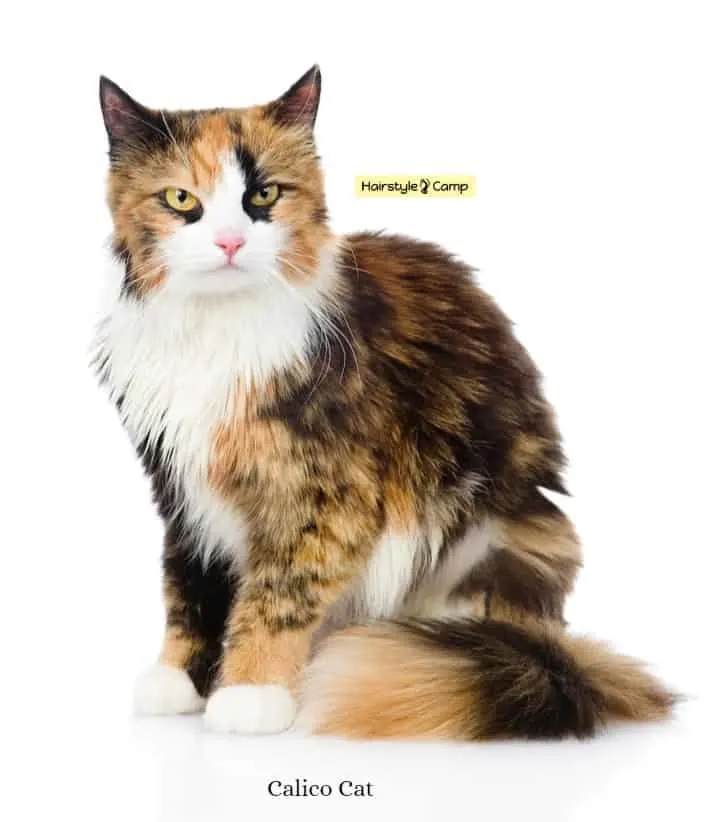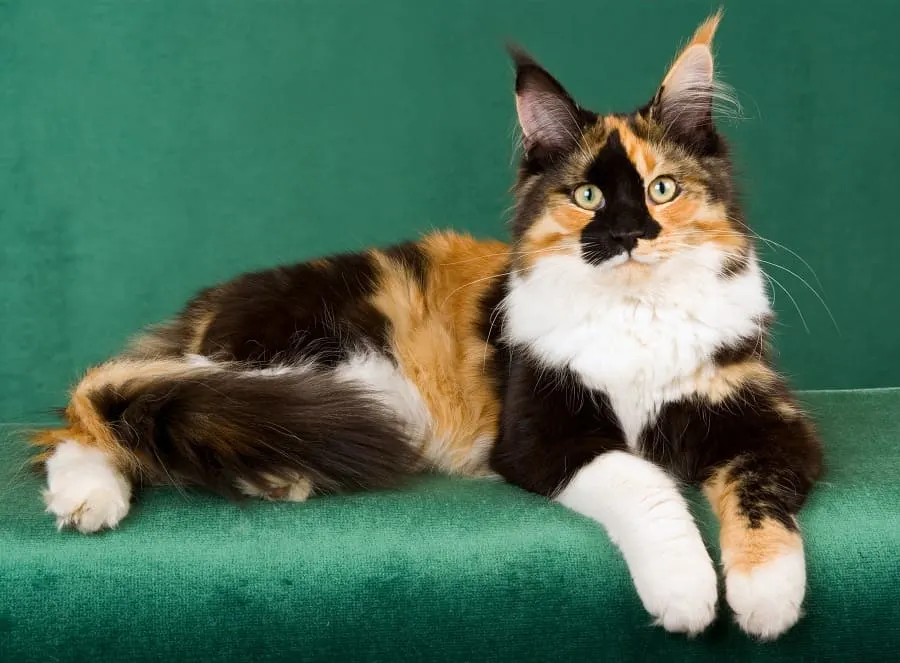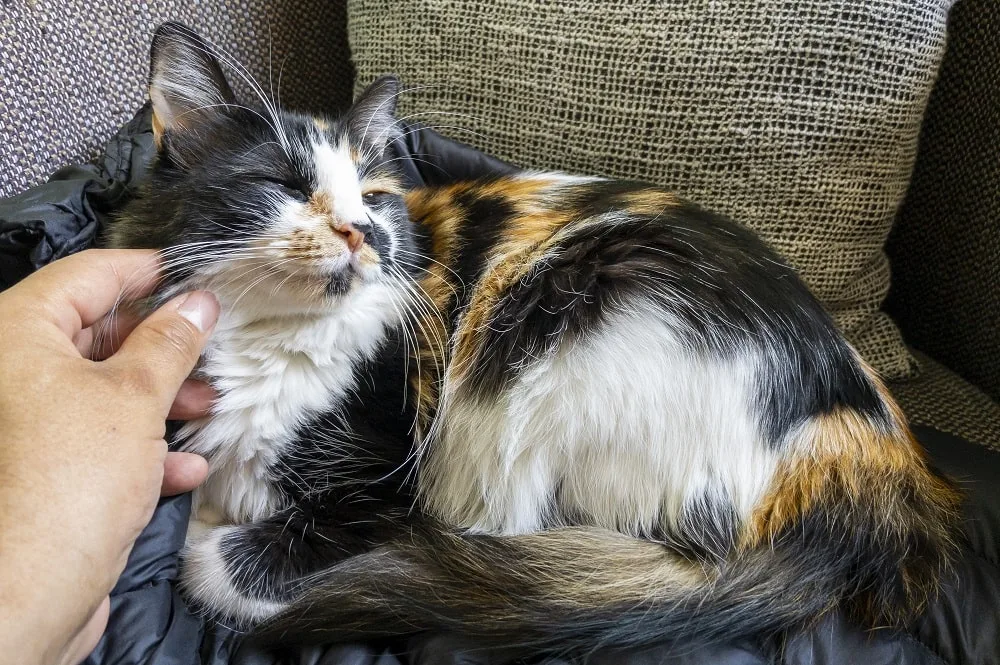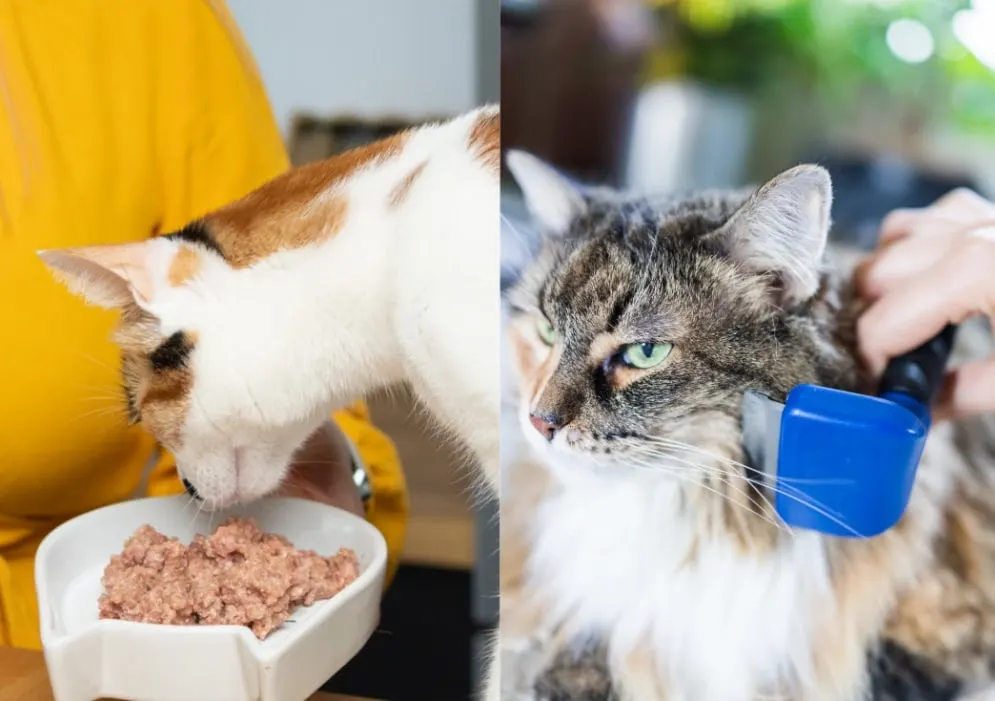Do you have a Calico cat with long fur? Whether you love your long-haired calico, are considering adopting one, or just happen to love learning interesting information about cats, you’ve come to the right place! These beautifully colored kitties possess certain characteristics that make them unique from all the rest.
Special Traits of Long-Haired Calico Cats
Below are five incredible ways that long-haired calico critters are different from other types of cats. You might be surprised at the information you discover below!
1. They are Tricolored

The word calico refers to tricolored nature of the fur found on these cats. To be a true long-haired calico cat, the fur must contain all three colors of white, black, and orange. One color must be white or cream while variations on the orange and black colors can range from red-auburn to dark brown.
Calicos are considered to be mostly white with patches of the other colors. The amount of white on each cat can vary from 25-75%.
2. Many Breeds Can Be Calico
Calico refers to the tricolor nature of the fur, not the breed. Quite a few breeds can produce calico cats with long hair, such as Maine Coon, Persian, Siberian, and Turkish Angora.
Are you wondering about what kind of personality to expect in your calico? Because a long-haired calico can be found in a variety of breeds, their personalities cannot be clearly defined and vary according to their breed.
3. Nearly All of Them Are Female
Yes, nearly 95%! Genetically, color is transmitted through the X chromosome. Females receive an X from both parents, so calicos can contain both black and orange fur colors alongside white.
Males, however, receive an X from the mother and a Y from the father, meaning they can only display orange or black, but not both.

Encountering a male calico cat is rare. Male calicos are the result of a genetic mutation and are most likely sterile. Due to this genetic variation, however, calico cats have truly unique fur colors from one another.
4. Some Say, Calicos Bring Good Luck!
Some say, anyways. Because they are so rare, different cultures around the world consider long-haired calico cats lucky. In the U.S., they are frequently called money cats and in Japan, calicos are called maneki neko, Japanese lucky cat or Beckoning Cat.
5. Calicos Cannot Be Bred
Because of their special genetic make-up, long-haired calico cats happen by chance. This means that they cannot be bred for their color.
The fact that calicos cannot be bred makes them even more unique than you might have imagined and explains why they are considered to be so lucky.
In a world where it’s so easy to get what we want, especially when it comes to breeding animals, calicos are clearly in charge of their own destiny!
6. Calico Cat Personality Traits

Calico cats are said to be the most colorful, but that can describe more than just their looks. Their personality is colorful and unique as well. Although every cat is unique in its personality, calico cats seem to have a lot of traits in common.
Calico cats are said to be more unpredictable, dramatic, and fiery when asking their owners. Sometimes it may seem like they are more of a moody teenager than a cat.
This vibrant spirit can make them fun to play with and put them up to quirky shenanigans around the home.
Although they are generally more independent, they will still seek attention on their owner’s laps and be loving and cuddly. However, sometimes it is still only on their terms.
7. Common Health Problems
In general, cat health problems are more breed specific than pattern specific. However, this is not true for male calico cats. It is extremely rare for a calico cat to be male, but this uniqueness does not come without health issues.
Male calicos are more genetically prone to having Klinefelter’s Syndrome. This syndrome gives the males an extra X chromosome, allowing them to display black and orange, which provides them with the calico color pattern.
This genetic defect makes them sterile and can lead to cognitive, behavioral, and physical problems. Physically, male calicos are more likely to have brittle bones, making it easier for them to break their bones.
They are also more likely to have extra body fat, which has health issues. Excess body fat can lead to diabetes, joint pain, and even heart disease.
8. Caring for Long-Haired Calico Cats

When caring for a long-haired calico cat, it is important to check the specific breed of the cat to determine any special needs or concerns.
In general, ensuring they have nutritious food and access to clean water is essential. Another vital part of caring for a long-haired calico cat is good brushing.
Whenever dealing with a long-haired cat, regardless of breed or color, it is essential to brush them daily.
Daily brushing helps prevent the fur from clumping, and it gets rid of any loose hairs. Removal of the hair prevents the kitty from ingesting it and helps avoid nasty hairballs.
FAQ
Here are some of the most common questions about haired calico cats.
Although it is unknown exactly where Calicos originated, many believe they were first discovered in Egypt and then spread down the Mediterranean to port cities. They have since spread worldwide into many of our homes and hearts.
How much long-haired calico cats cost will ultimately depend on the breed. Sometimes they can be free when a cat has mistakenly gotten pregnant, or they could be particular breeds like a Persian, where the cost can go as high as $2000.
Regardless of fur length, calico cats cannot be specifically bred, making them rare. In fact, the chances of a calico cat are 1 in 3,000.
Since the term “calico” refers to only the color of a cat, it does not determine how much it will shed. How much a cat will shed depends significantly on the breed and hair type of the specific cat.
Related Articles:
Whether you come across a long-haired calico cat or have your own as a pet, this information can be important to know. Perhaps you will appreciate them in a totally new light!
